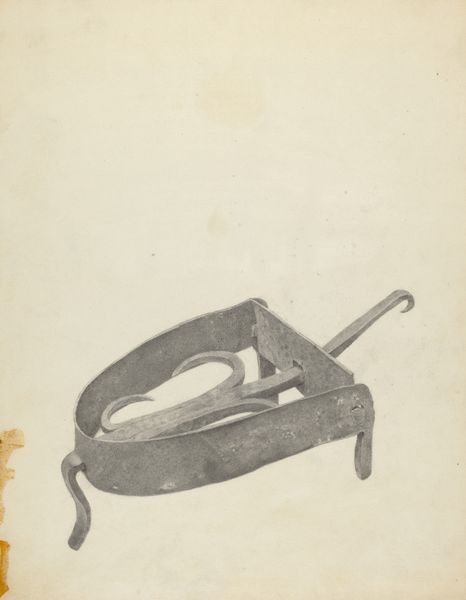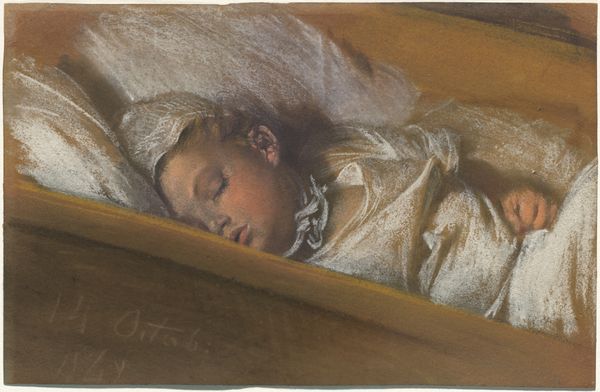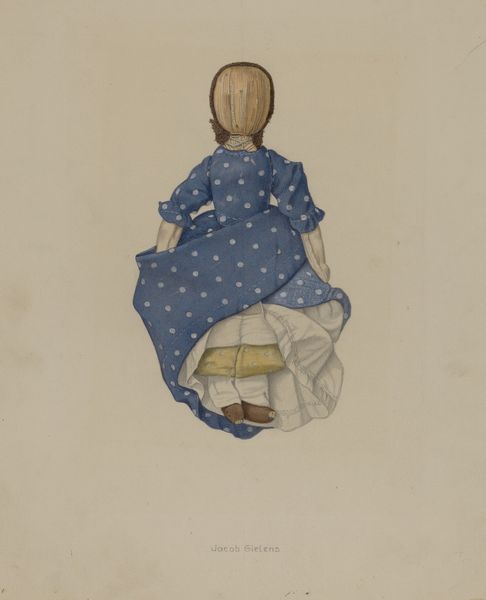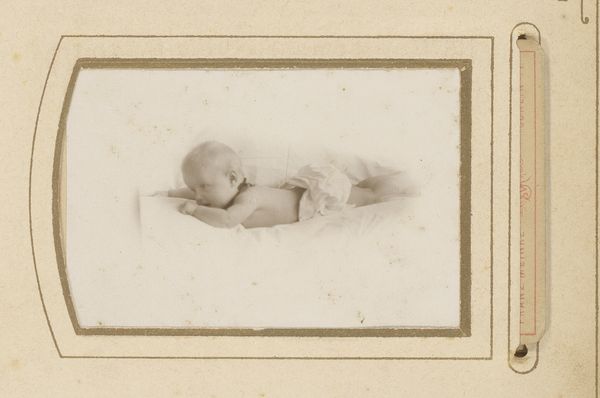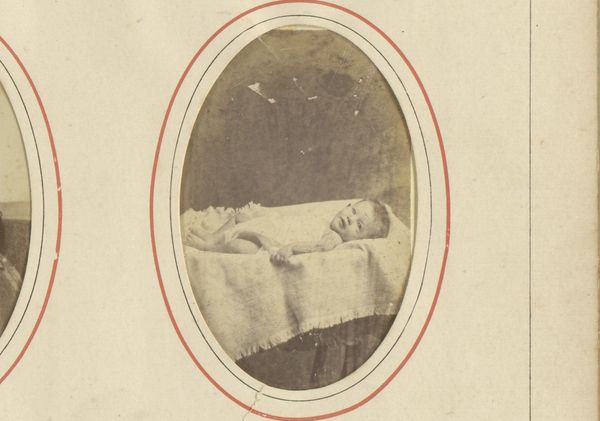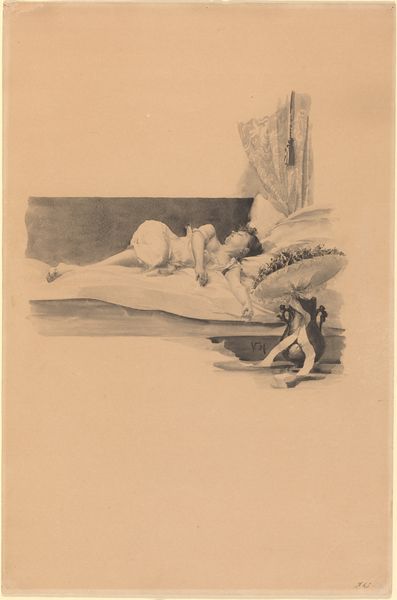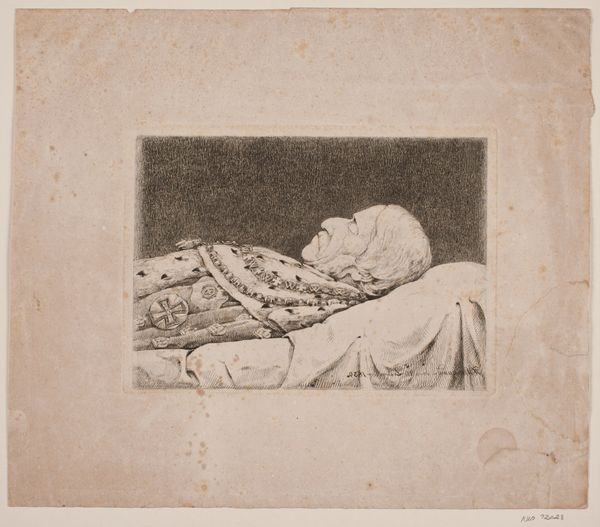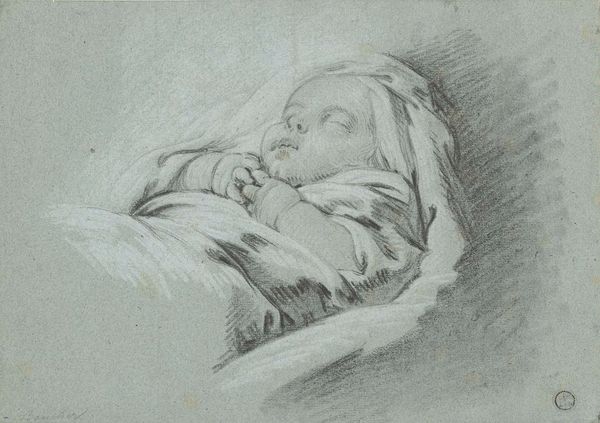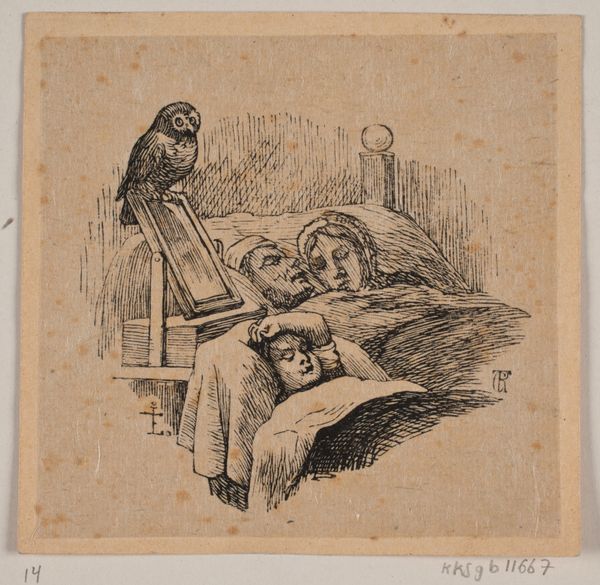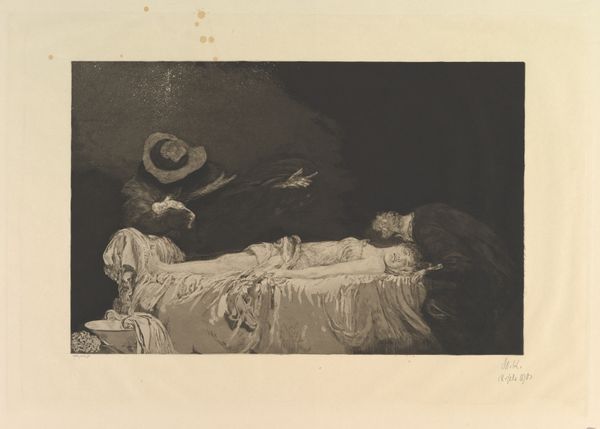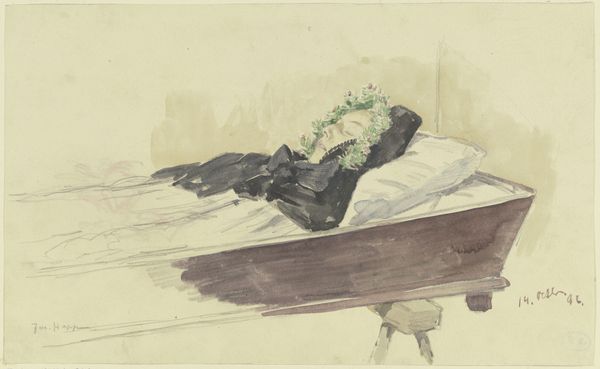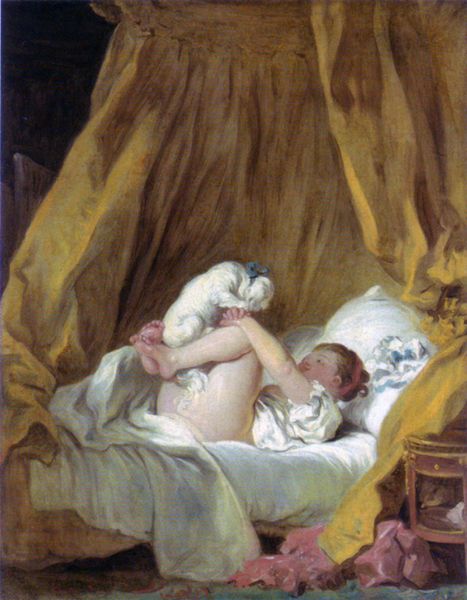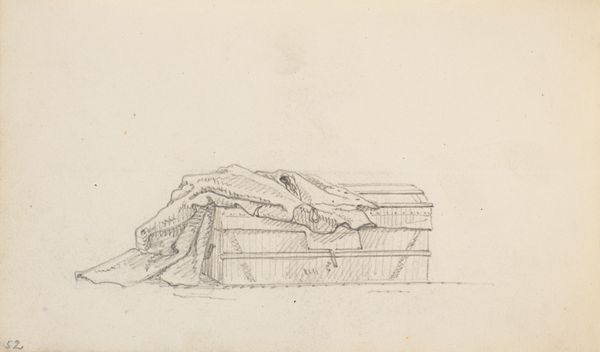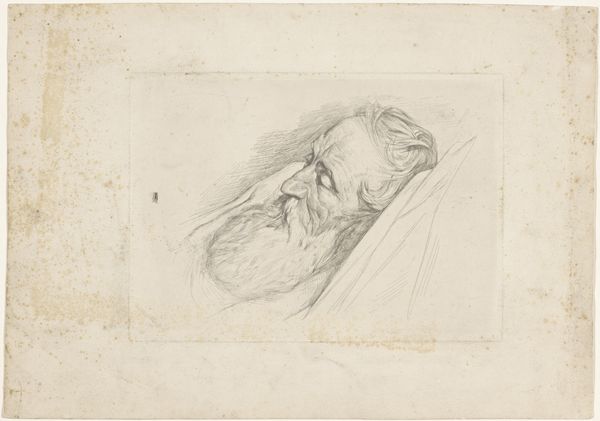
drawing
#
drawing
#
toned paper
#
charcoal drawing
#
possibly oil pastel
#
oil painting
#
acrylic on canvas
#
underpainting
#
portrait drawing
#
watercolour illustration
#
portrait art
#
watercolor
Dimensions: overall: 23.1 x 29.2 cm (9 1/8 x 11 1/2 in.) Original IAD Object: 40"long; 16"wide; 26"high overall. Rockers 22"wide.
Copyright: National Gallery of Art: CC0 1.0
Curator: Isn't this cozy? A 1936 watercolor and pencil drawing titled "Cradle." Something about it is making me want to curl up and nap. Editor: Absolutely. The immediate sense I get is one of stillness. A contained universe. The soft rendering almost vibrates with held breath, doesn’t it? The simple act of depicting a cradle transforms it into an object laden with symbolic weight. Curator: I like "contained universe" – there's something protective about the enclosed form, but there's also the anticipation of infinite possibilities waiting to unfold within it. Does the cradle as an icon predate Christianity in any major cultures? I wonder if its resonance stretches even further back... Editor: The motif is ancient, cropping up in Egyptian art with the infant Horus in his woven basket among the reeds. Think of the symbolic implications: hidden potential, vulnerability demanding protection, the cycle of life starting anew. Also in religious iconography you have Mary hiding baby Jesus, linking a family drama with wider salvation... Fascinating. Curator: Oh, yes, cradles *everywhere.* Well, the cradle here doesn't just feel domestic, but deeply personal. The way the artist has used watercolor – the soft washes of brown, the subtle pinks around the pillow – almost gives the wood a warm, living quality. What does this evoke, beyond the obvious tenderness toward new life? Editor: The warmth could suggest memory, wouldn't you agree? This might be less about anticipating birth and more a rumination on infancy itself. The somewhat blurred edges and indistinct shadows could also be seen as the haziness of recollections filtered through time. It feels both intimate and universally resonant because it taps into shared human experience. The slightly wonky lines somehow only add to that sentiment, no? Like a memory itself, slightly unfixed, slightly wrong but perfect in its imperfection. Curator: That's so evocative. It truly lingers. We project so much hope, so much fragility onto such small beginnings, don't we? "Cradle" ends up feeling like more than just an object, it transforms into a vessel carrying the collective human investment in the future. A hopeful image, then, in a tumultuous world? Editor: Indeed, in that stillness, in that protective form, hope whispers. Thank you, "Cradle," for reminding us what endures.
Comments
No comments
Be the first to comment and join the conversation on the ultimate creative platform.
